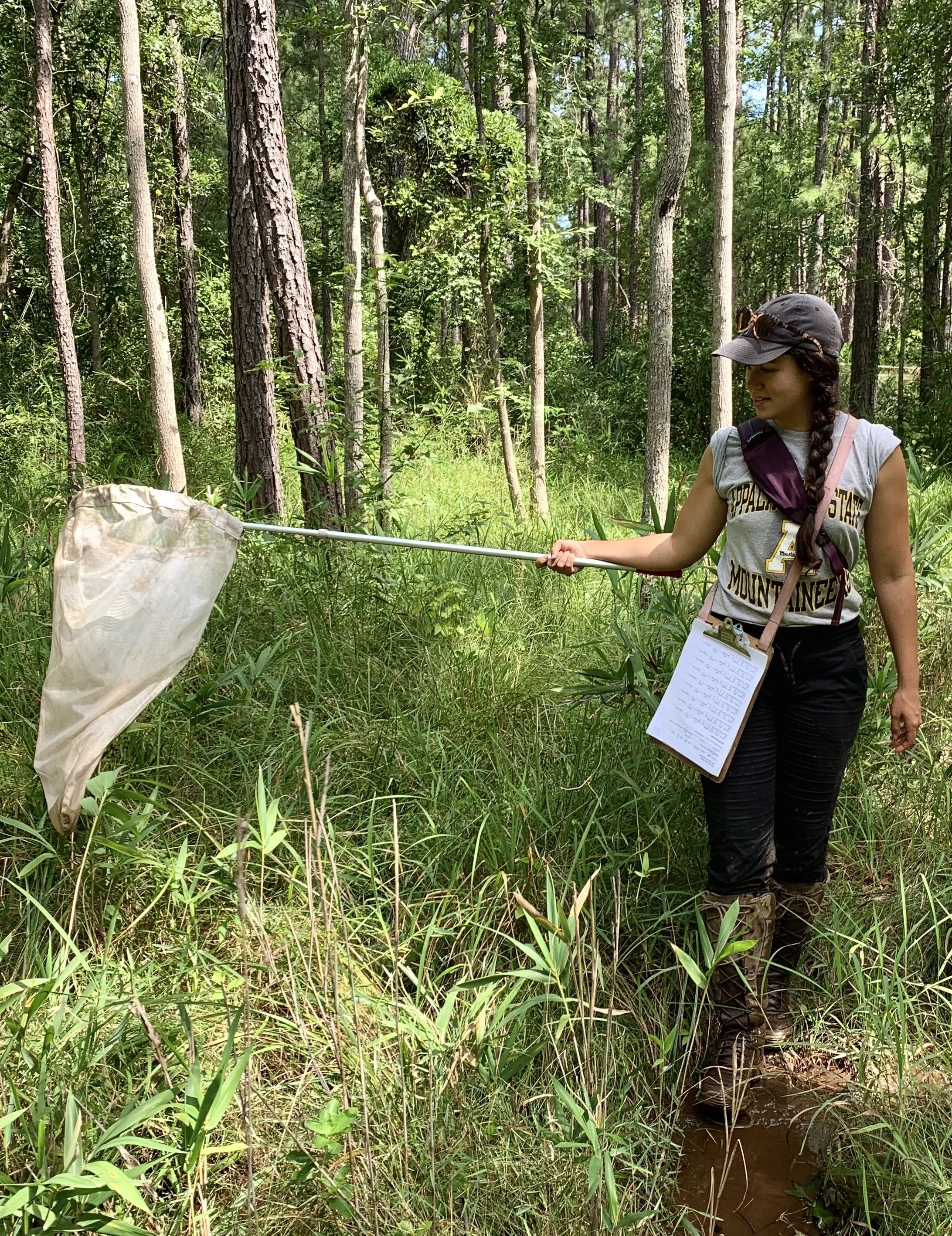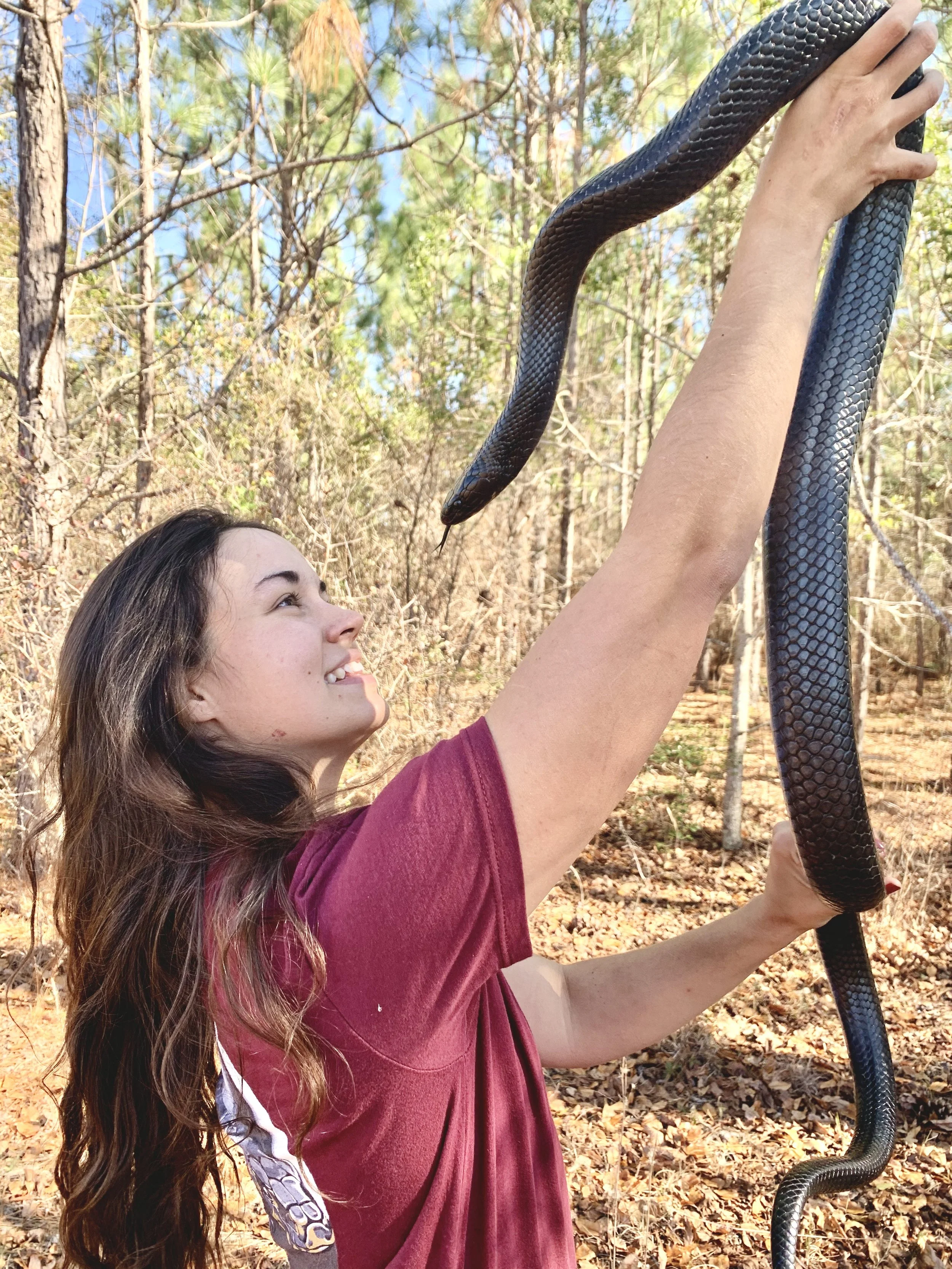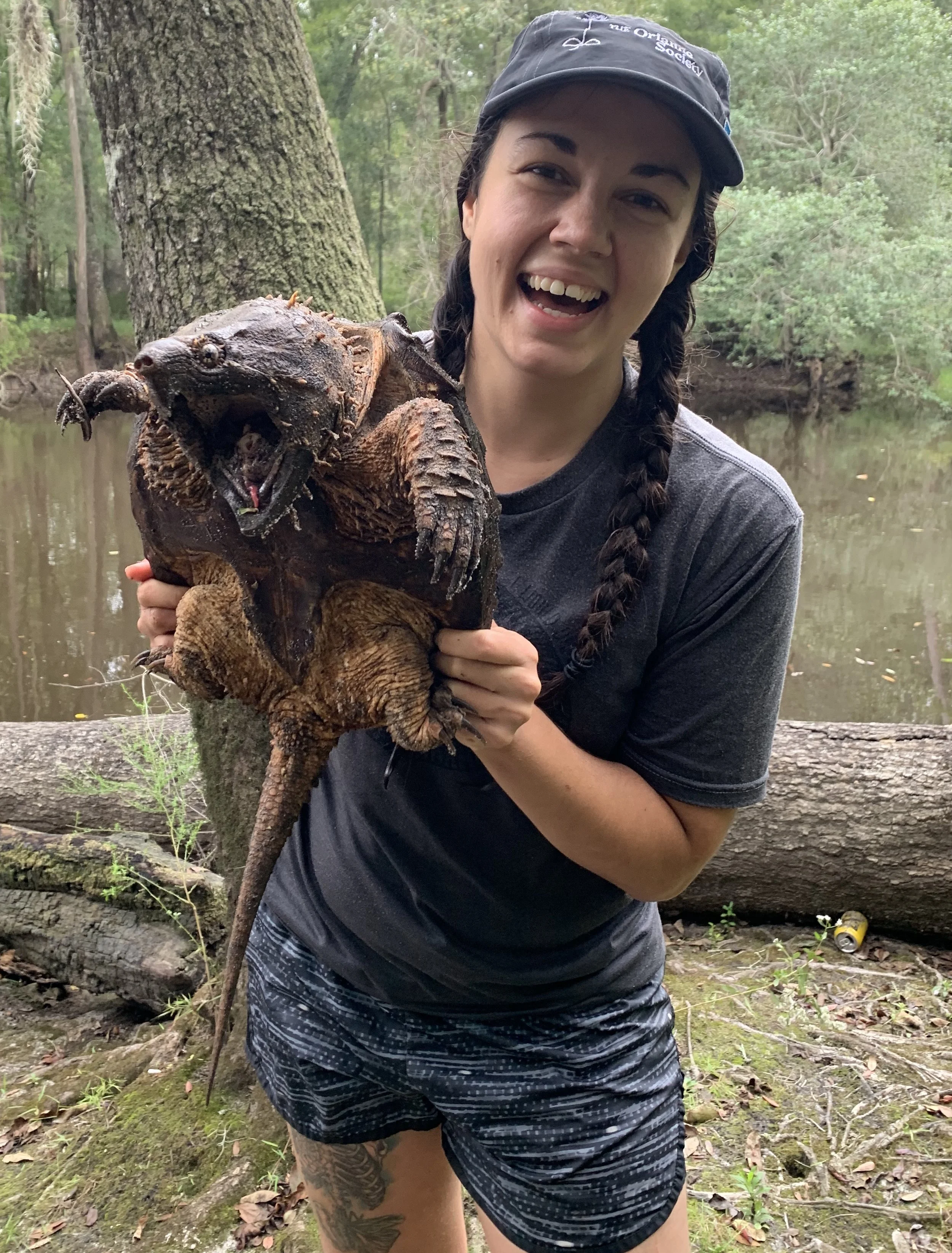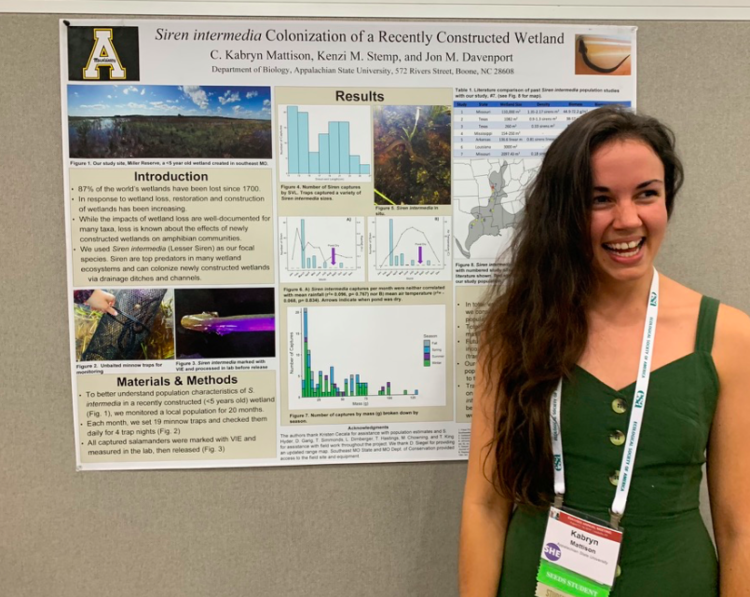Conserving our Planet's Wildlife
Author: Kabryn Mattison (2018 Undergraduate Transfer, Appalachian State University)
I’ve been thinking back to my past self lately, the imposter syndrome filled, desperately hopeful young woman who applied for the Jack Kent Cooke Transfer Scholarship five years ago. I think about how in my scholarship essays I expressed a deep dream to one day help conserve our planet’s wildlife. If the person writing those essays could see me now, she would be so proud. What was once a dream that seemed so far away, is a daily reality.
In summer 2020 I graduated with my Bachelor’s in Biology with a concentration in Ecology, Evolution, and the Environment from Appalachian State University with honors. Because of the freedom that the Foundation’s support granted me while at Appalachian State, I was able to complete an Honor’s Thesis on the impacts of introduced trout on the body condition of our native salamanders. During my time at App, I was also able to travel to the Arctic to research methylmercury biomagnification in Wood Frogs with the support of the Foundation’s summer internship scholarship.
In the Field
After graduation, I accepted a position as a research technician working with Michigan State University’s Haddad Lab on the conservation of the Federally Endangered Saint Francis Satyr (SFS). Working with endangered species in a direct management capacity has been my highest guiding value during my studies, so this opportunity felt very aligned with that goal. The SFS is a small brown butterfly that exists nowhere else on the planet but Fort Bragg Military Instillation. My dad, an army vet who met my mother while stationed at Fort Bragg, joked when I told him, “So you’ll be saving butterflies in the same place I was trained for war?” That sentence really summed up a lot of my life philosophy without him even realizing it. My work on Fort Bragg focused on population assessments of the SFS (which included catching them and marking their delicate little wings with a sharpie! Crazy!), habitat restoration, and captive husbandry of the butterflies.
After my work ended on Fort Bragg, I accepted a position at an NGO that focuses on endangered reptile conservation called The Orianne Society, a very well-respected organization in my field. Once again, I was able to work with a group that specialized in the conservation of federally listed species, and it was an unbelievable opportunity to learn and grow as an ecologist and naturalist. While with Orianne my work primarily focused on the conservation and understanding of the federally endangered Eastern Indigo Snake. Eastern Indigos can reach lengths of almost 8 feet and are top predators in their ecosystem. The graceful power of these snakes cannot be understated. I also researched North America’s largest rattlesnake, the Eastern Diamondback Rattlesnake, which is currently petitioned for federal listing under the Endangered Species Act. My work required me to go into the habitat of Eastern Indigo Snakes and Eastern Diamondback Rattlesnakes and find these highly secretive species by using instinct, nuanced understanding of their habitat requirements, and tracking skills (literally looking for snake tracks in the sand). Habitat loss due to development and natural resource exploitation, as well as persecution by humans has severely impacted these important species. Research completed for Orianne will help us better understand the status of their populations and aid in management decisions for their future. During my time there, I was also able to study prolific species like the Gopher Tortoise, the Suwannee Alligator Snapping Turtle, and the Southern Hognose Snake.
Full Circle
Years ago as a community college student I got to meet Jeff Hall, the state of North Carolina’s Partners in Amphibian and Reptile Conservation (PARC) biologist. I learned about the work he and his colleagues do to help conserve rare reptiles and amphibians (herps) in North Carolina. It was so inspiring and opened my eyes to wildlife biology as a potential career path. I could only dream of one day being a part of work with such an impact. After my time at Orianne, I was hired to work directly with Jeff as a wildlife diversity technician for the North Carolina Wildlife Resources Commission (NCWRC), focusing on reptiles and amphibians of greatest conservation need.
My current work at NCWRC is an absolute dream and takes me all over the state of North Carolina to study rare herps. The wide array of projects I work on is impossible to even cover completely. We aid in the monitoring, captive husbandry, and release of the state endangered Gopher Frog. We complete surveys for rare herps like the Bog Turtle (North America’s smallest turtle), federally threatened Neuse River Waterdog, and Hellbender Salamander (North America’s largest salamander). We monitor and tag Spotted Turtles to better understand their demographics and help fight their illegal poaching. We use camera traps to understand cryptic behaviors of the state endangered Eastern Diamondback Rattlesnake. We deploy automated audio recording devices to search for the calls of rare frogs. We assist in the collection of genetic samples of the state listed Timber Rattlesnake to better understand gene flow across their range. And all that’s only the tip of the iceberg! No day is the same, and there is always something new to do or learn. The only constant is that my job is to be a voice for the voiceless, and to aid in the conservation and widening of our scientific understanding of some of the earth’s most misunderstood creatures.
Looking for Ghosts
The work I do is on the very front lines of the extinction crisis and the climate crisis, which means it can be heavy. I’ve seen federally endangered study animals I was working with and knew personally poached with no consequences, seen local extirpations of rare frogs, watched critical habitat be destroyed in the name of progress, all in just over two years in this field. This work can feel like death by a thousand cuts, watching species I love disappear slowly, knowing the consequences of the web of life losing its threads. I often joke that a lot of my job is “looking for ghosts,” searching for the last survivors of species that have otherwise been wiped out of many areas, species many people don’t even know exist, yet I spend much of my life mourning. But as they say, grief is love, and I always want my life to be led by love.
In these last few years I have learned so much about the inside of the conservation world from working within the academic side, then the NGO side, and now the governmental side. I’ve seen successes, as well as many ways modern conservation is failing and disconnected from the very world it wants to protect. I take it all in, and I am confident that every hardship I’ve faced in this work is leading me directly to my next chapter- finding a graduate program that will help me work with even deeper embodiment of my values and service to the world.
Aspiring Wildlife Biologist
The number one thing I’d advise any scholars considering the field of wildlife biology, ecology, or environmental science, is to find a mentor as soon as possible. Whether it be a professor, a professional you are volunteering with, a graduate student, or even a peer that has some experience, having people in your corner that understand the nuance of the wildlife field is imperative. Navigating the scientific world, especially as a low income or first-generation student can be daunting. There are many very important things that you are simply expected to know that aren’t taught and having someone to help along the way can really change your experience. If you can’t find a mentor, reach out to me! I would love to help.
I’d also recommend getting as much time in the field as you can. Hands on experience is key in wildlife work and makes all the difference when applying for jobs. You can have the most prestigious degree in your hands, but if you don’t have tangible research and field experiences, it will be hard to secure opportunities. Joining a research lab and getting experience while in undergrad is imperative. This gives you a fantastic opportunity to build skills for your CV, make connections with graduate students and your PI, and learn what specialty you enjoy. That is how I realized I was meant to work with herps! This field is hyper competitive- like fighting for the same few scraps, intensely competitive. Most entry level jobs like the one I have require a masters, tons of experience, and professional connections. The more skills you can acquire in undergrad, the better off you are when you graduate.
Gratitude
It goes without saying- but my deep gratitude pulls me to say it anyway, so much of this would not have been possible without the Foundation’s support. With the material security the Foundation offered me, I was able to push myself harder than I’d ever formerly had capacity to. When I was sitting in a cubicle a decade ago processing bank loans, being told by everyone around me that I should be thankful to have a good job and stay in that safety net forever - I knew I was capable of more, even if it meant taking risks. I knew that my soul’s calling was out in the world and that I had big things to give. I am so glad I listed to that call, and I am so glad the Foundation was there to hear it and believe in me too.
To learn more about Kabryn Mattison’s work, visit her website.



